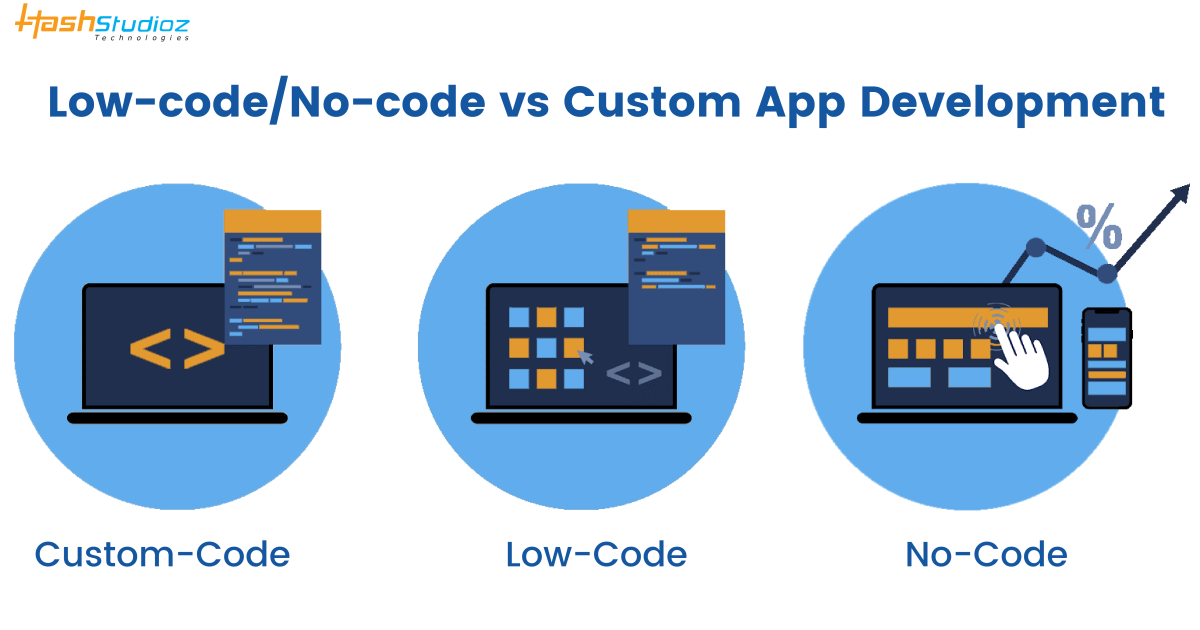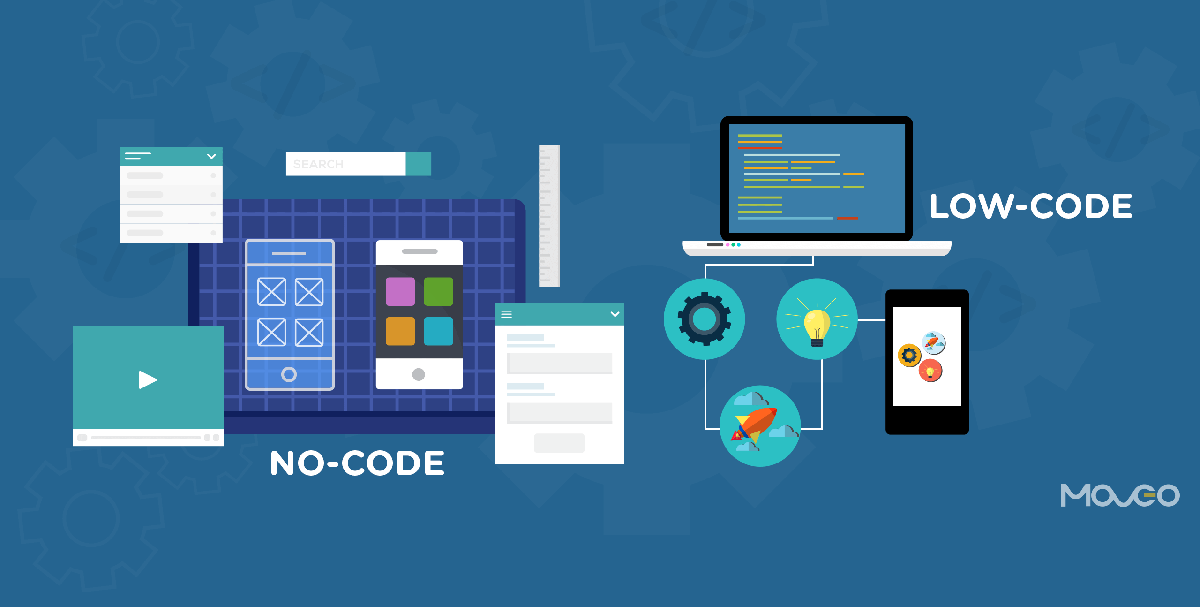Excellent Info For Deciding On application development with Low-code platforms
Wiki Article
Benefits Of Low Code Application Development In Terms Of Integration Capabilities
Low-code application development offers significant advantages when it comes to integration capabilities. They are vital for developing applications that can seamlessly integrate with diverse platforms and services. Here are a few of the main benefits: Prebuilt Connectors & APIs
A Variety of Connectors : Low-code platforms generally come with a huge library of prebuilt connectors to common enterprise software (e.g. ERP, CRM, databases, and cloud services). Integration of these systems is made simpler.
API Integration: A lot of Low-Code platforms include out-of box API integration tools that allow developers to quickly connect external services and data resources.
Simple to utilize
Drag-and-Drop Integration integration tasks can usually be completed using drag-and-drop interfaces, making it possible for both developers and non-developers to set up complex integrations without writing extensive code.
Visual Workflow Builders Visual Workflow Builders designed to create workflows, data flow and integrations. They aid in understanding and establishing them more efficiently.
Standardized Integration Methods:
SOAP and restful services: Supporting web-based services standard protocols like REST and SOAP makes integration simple with an array of platforms and systems.
OData Other Standards The support for standards such as OData facilitates the transfer and manipulation of data across platforms and applications.
Real-Time Data Synchronization:
Real-Time Integrations: Low-code systems are capable of handling real-time data sync between applications and systems. This guarantees that information is current and consistent across the entire organization.
Event-Driven Architect: Certain platforms have events-driven structures, allowing applications to respond immediately to events. This is essential in dynamic interactive applications.
Legacy System Integration:
Low-code platforms provide many tools to integrate with older systems. They let organizations modernize IT without overhauling their existing systems.
Data Migration Tools - Built in data-migration tools allow you to transfer data from older systems to applications that use low-code.
Integration of Third Party Services:
Cloud Services Integration: The seamless integration of cloud services like AWS Azure, Google Cloud facilitates the easy deployment and scaling up of applications.
Business Integration of Applications: Low code platforms can be integrated with various business applications such as Salesforce, SAP and Microsoft Dynamics. This allows for a seamless workflow between the business processes.
Simplified Data Management:
Unified Data Models A few low-code platforms provide unified data models that simplify managing data and integrating across multiple systems.
Data Connectors - Pre-configured connectors which allow for easy access to, and manipulation of data from diverse sources.
Security and compliance:
Low-code platforms ensure that integrations meet security standards and protocols to protect data during transit and while it is at rest.
Security Features: These platform typically have features that make sure that integrations comply with regulatory requirements, such as GDPR or HIPAA. This gives peace ofmind for businesses handling sensitive information.
Extensibility:
Low-code platforms often meet complex integration needs by including custom scripts or code. They allow for flexibility but without sacrificing their accessibility.
Plug-in Ecosystem : An ecosystem of plugins and extensions that can extend integration capabilities through allowing users to easily implement new functions as they are needed.
The overall low-code platform's integration capabilities can be a very effective tool to create interconnected applications that are efficient and scalable. They are able to streamline the process of connecting disparate systems, and increase data flow. Businesses can also leverage existing technology and implement new ones while maintaining a cohesive IT environment. Read the most popular helpful hints on Low-code Platform for application development for blog advice including low code development platforms, lowcode no code, develop mobile application, app modernization, cross platform mobile app development, app modernisation, microsoft azure sql, develop cross platform mobile app, develop cross platform mobile app, azure sql and more.
![]()
The Benefits Of Developing Low-Code In The Areas Of Governance And Security
Low-code design of applications offers a variety of advantages in terms of governance and security. Both are vital to making sure that applications remain safe, compliant and well-managed throughout their lifespan. Here are the key benefits: Centralized Governance
Unified Manage Console: Lowcode-based platforms typically provide a management console allowing administrators to manage and supervise applications.
Role-Based Access Control: These platforms include robust role-based control that allows administrators to define policies and then enforce these policies. It ensures that only users with authorization can alter or gain access to specific areas of the application.
Compliance and Regulatory Application:
A lot of low-code platforms come with built-in security features for compliance. They are built to conform to industry standards and regulations such as GDPR or HIPAA. They offer frameworks and instruments that ensure applications meet the specifications.
Audit Trails: Organizations often use comprehensive log and audit trail systems, which allow them to monitor changes make, track access and assure the compliance of internal and external laws.
Increased Security Measures
Data Encryption Low-code platforms typically have built-in encryption for data in transit and in rest, securing sensitive data.
Security Certifications Many low-code vendors have security certifications (e.g. ISO 27001, SOC 2 ) that demonstrate compliance with high security standards. This gives additional security for the customers.
Automated security updates:
Regular security updates and patches Low-code platforms manage automatic security updates, patches and updates. Thus, applications are secured from threats of the present without the need for developer intervention manually.
Security Monitoring: Tools for continuous monitoring of security are provided. They offer real-time alerts as well as insight into security issues that might arise.
Data Governance:
Data Access Policies: These platforms enable organizations to define and enforce data access policies which ensure that data is accessible to authorized users and is properly used.
Data Masking and Anonymization: Built-in tools to mask data and protect sensitive information especially in testing environments and development environments.
Continuous application lifecycle management
Development and deployment pipelines Low-code platforms allow for integrated development, including security checks. This guarantees security throughout the entire lifecycle of an application.
Version Control: An integrated version control system is used to track changes and allows any modifications made to an application to be tracked. If required the changes can be reversed and the integrity of the application ensured.
User Authentication & Authorization:
Single Sign-On (SSO). Support for advanced authentication and single sign-on makes it easier and increases security.
Multi-Factor Authentication: Many platforms have integrated support for multi-factor authentication. This adds an extra layer of security to the applications.
Policy Enforcement and Compliance:
Low-code platforms often come with policies templates pre-defined that allow organizations to establish security and governance policies swiftly.
Compliance Monitoring Tools: They offer continuous monitoring and reports on compliance status. This helps to spot potential problems and address them proactively.
Integration with Existing Security Infrastructure:
Integration seamless: Low-code platforms are able to be seamlessly integrated with the existing security tools and devices like firewalls, SIEM solutions (Security Information and Event Management), and identity management systems.
API Security: API features that protect data and maintain the integrity of the application are integrated into the API.
Best practices and training:
Numerous platforms provide guides and best practice for secure application development. They assist non-developers to meet security standards.
Security Training: Some providers of low-code provide education and resources in security to help users learn how to design and develop secure applications.
Overall, the governance and security benefits assure that applications are developed and maintained in a secure manner, in compliance with regulations and under control. These platforms have the frameworks, tools, and regulatory compliance necessary to safeguard sensitive customer information, enforce policy, and keep regulatory compliance in check, while also simplifying the oversight and management of the development process. Take a look at the top here are the findings for Legacy application modernization with Low-code for site tips including low code platforms, application development platforms, lowcode no code, azure sql server, developing mobile apps, paas service, azure sql server, rapid action development, push notifications android, azure sql and more.

The Benefits Of Low-Code Development For The Development Of Applications With Respect To Restrictions And Customization
Low-code application development is a well-balanced solution that offers significant benefits in terms of overcoming limitations while also permitting customization. Here are some of the main benefits:Handling limitations:
: .
Simplified Development: Low-code platform reduces complexity by providing components and templates that have been pre-built, which allows rapid creation and deployment.
Guided Workflows: A lot of platforms have guided workflows as well as wizards that help developers navigate through the maze of processes, decreasing the risk of mistakes and ensuring consistency.
Scalability Solutions:
Built-in Scalability: Low-code platforms have many features that allow for the design of scalable architecture, which allows applications to cope with increased load without significant redevelopment.
Performance Monitoring Tools: Tools for monitoring and optimizing performance are incorporated into the application to ensure it remains efficient regardless of the size.
Security and Compliance
Security features integrated into Low-code platform include built-in measures for security like encryption. Role-based access control and automated compliance checks, addressing the most common security concerns.
Platforms are constantly changing their security procedures as well as measures of compliance, which guarantee that the applications are secure against emerging threats.
Customization Options:
Extensibility:
Low-code platforms allow developers to enhance functionality beyond the standard offerings by using customized code.
Moduls and plugins that are custom-designed Developers can develop custom plug-ins and modules that provide specific functionality tailored to the unique requirements of a particular business.
APIs and Integration:
API Support. A comprehensive API support enables seamless integration with external systems and services, allowing an extensive amount of customisation and connection.
Third-Party services: Low-code platforms provide connectors that are pre-built for popular third-party services. This makes it much easier to build and integrate applications.
Flexible Design for UI/UX:
Customizable Interfaces Developers are able to design and modify user interfaces according to specific usability and branding criteria which results in a custom user experience.
Responsive Design The built-in capabilities of responsive design guarantee that applications are able to be customized for different screens and devices.
Making Business Logic more flexible is simple:
Visual Workflow builders They allow developers to develop complex processes using little or no programming. They can design workflows and business logic using visual.
Conditional Logic and scripting: Platforms allow for the application of conditional logic and custom scripting for handling particular business rules.
Data Management
Custom Data Modelling: Those who develop the models define custom models to fit specific requirements for the particular application. They can tailor processing of data according to a company's requirements.
Advanced Data Processing: Integration with sophisticated tools and capabilities for data processing allow customizing how data is analysed, and used within your application.
How to balance customisation with limits:
Frameworks, Standards and Standards:
Best Practices in Compliance Low-code platforms facilitate the use of industry-leading practices and standards. This aids in maintaining high-quality, flexible, and secure apps.
Governance Frameworks. Built in governance frameworks can help ensure that any modifications are not detrimental to the security, integrity or the compliance of an application.
Iterative Development and Feedback
Rapid Prototyping : Developers can quickly test their customizations and prototypes based on the feedback of users, improving the application according to their requirements.
Continuous Improvement: Platforms with low-code support for continuous improvement that allow customization and enhancement when the requirements of business change.
Empowering Users
Low-code platforms enable citizen developers through letting non-developers through intuitive interfaces to customize applications, they broaden the number of contributors who can enhance and tailor applications.
Support and Training Information: Many platforms offer comprehensive training and support materials to allow users to customize their applications without compromising performance or stability.
Low-code development is a powerful framework that allows for plenty of customization while addressing any issues. This allows businesses to develop and maintain applications that function, are tailored to meet their needs, and meet the highest standards in terms of security, quality, and scalability.
